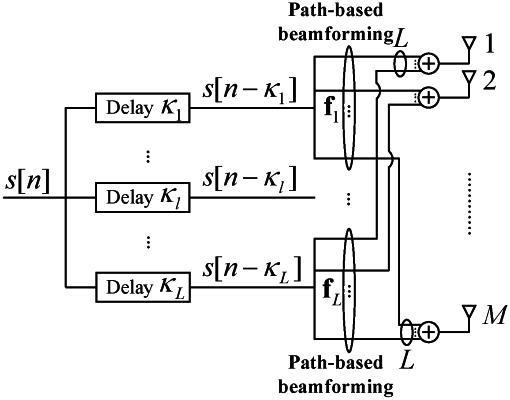| CPC H04B 7/043 (2013.01) [H04B 7/0617 (2013.01)] | 5 Claims |

|
1. A channel equalization-free single-carrier delay alignment modulation method, comprising the following steps:
S1: obtaining a number of temporal-resolvable multi-paths, and delays and channel gain vectors corresponding to the multi-paths based on a channel impulse response;
S2: deliberately introducing, by a transmitter, a corresponding delay for a symbol sequence within a channel coherence time Tc, so as to perform delay compensation, so that all multi-path signal components arrive at a receiver simultaneously and constructively after propagating over a time-dispersive channel, wherein the delay compensation is performed based on a pre-compensation value, and the pre-compensation value is equal to a maximum delay among all the multi-paths minus the delay of the corresponding multi-path;
S3: utilizing, by the transmitter, multiple antennas to perform path-based beamforming design, wherein when a number of transmit antennas is not smaller than the number of the temporal-resolvable multi-paths, path-based zero-forcing (ZF) beamforming is used to completely eliminate inter-symbol interference (ISI); or when the number of transmit antennas is smaller than the number of the temporal-resolvable multi-paths, path-based maximal-ratio transmission (MRT) or minimum mean-square error (MMSE) beamforming design is used;
S4: at the end of the moment Tc, determining, by the transmitter or the receiver, whether the communication process ends; and
S5: if the communication process ends, ending the process; and if communication continues, repeating the steps S1 to S4 until the communication ends.
|